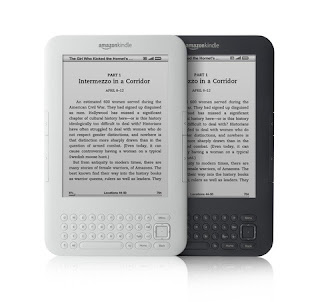If you’ve been in the tablet business for a while, the whole “eBook reader” debate probably seems like a strange impetus for a massive surge in sales, but nonetheless it seems to have had a big impact. For sure, the sheer volume of Amazon Kindles and Barnes and Noble Nooks that were sold in 2009 definitely changed how Apple initially introduced and marketed their tablet, particularly with the inclusion of iBooks, which admittedly hasn’t done that great compared to Kindle and Nook apps.
And no, most people who bought an iPad or Galaxy Tab in 2010 didn’t do so because they wanted to have a really pricey eBook reader, but buried down in there is the fact that a lot of people who would have bought a Kindle or Nook changed their mind when they saw how amazing a tablet could be.
In effect, the tablet market grew faster in 2010 because a lot of people were already considering buying an eReader and decided it made no sense to spend more than $200 on a device that only did one thing. With some careful marketing and the eventual support of the two major eBook distributors, Apple and later Android devices took advantage of this to provide products that did a lot more than an eBook reader for a slightly higher price.
These days I’m seeing a lot of discussions about color eReaders and whether the screen of an LCD device can match digital paper. However, the real issue here is how many people really need a device to read books compared to a device that will allow them to write email, watch movies, surf the web, and read books. More importantly, is it fair to the medium to compare what could be a full-blown computing solution to a gadget like the Kindle?
Is there a future for eReaders? Of course. Amazon figured it out very fast and dropped the price of their WiFi only Kindle to less than $150, well below the entry level prices of most tablets. Unfortunately for them, however, that probably still won’t convince tablet owners to buy yet another device. Despite the battery life, weight, and e-ink display, it just isn’t as flashy and spending another $150 for something that duplicates a feature on their tablet is a tough sell.
That’s why the move by Nook to produce a color unit for $250 is interesting. It partially bridges the gap between the clunky button interface of a Kindle and the super slick touch screen of a tablet. We’ve still yet to see a tablet truly replicate the eReader experience. They are heavier, experience lots of glare problems and are generally more expensive, so people who don’t need or don’t want all that extra technology will shy away.
If Notion Ink’s Adam with Pixel Qi is the real deal, it might be a good solution, as might other future devices rumoured to be considering Pixel Qi. For now, however, there is an oddly symbiotic relationship between eBooks and tablets. Neither side can quite figure out if they are competitors or complementary formats. When they do, it will be interesting to see what happens.

No comments:
Post a Comment